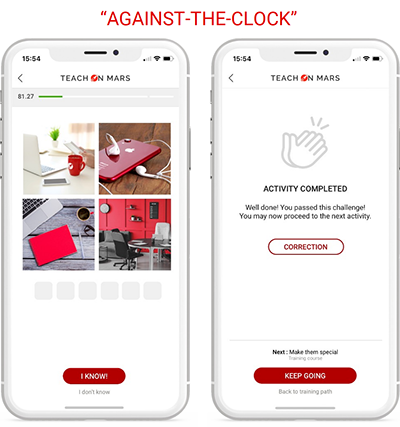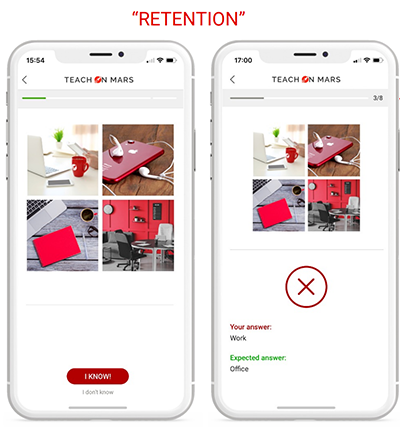Guess What joins the array of Teach on Mars’ pedagogical activities to end the year.
Gamification can serve as a remarkable levering tool for learning. At Teach on Mars, we’re convinced of this and we keep it in mind when designing new activities. With Guess What, our aim was to enable our authors to create a multilevel gamified experience.
The overall concept of Guess What is very simple: every question has one or 4 images; learners enter their answer using their keyboard. The game needs to be easy to understand and sufficiently enjoyable in order for it to be played time and time again. But it doesn’t stop here! The Guess What game boasts new mechanisms waiting to be explored. Based on the options you choose, you define the outline of your pedagogical activity and offer your learners a brand-new gaming experience.
New mechanisms to explore
The first game option is to choose between 1 and 4 images to add to your question. Depending on the choice you make, you either have a simple visual quiz or a more complex deduction game.
Here’s a list of options to explore:
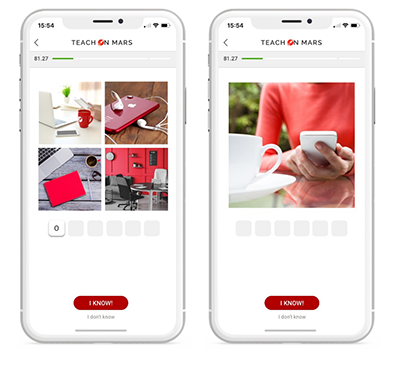 1 image: a “classic” image quiz. A game similar to the Quiz Game, in which, this time, learners have to guess and type their answer, as opposed to choosing from a pre-set list.
1 image: a “classic” image quiz. A game similar to the Quiz Game, in which, this time, learners have to guess and type their answer, as opposed to choosing from a pre-set list.- 4 images: a deduction game. A game reminiscent of the 4 Pics, 1 Word app. You show 4 ingredients and learners have to guess the fragrance. You show 4 products and learners have to type the launch year.
- A mixture of questions: the ultimate guessing game. As an introductory activity or final quiz, this configuration offers you even more possibilities.
The other major innovation of Guess What are the pre-defined levels of play. At the start of the activity, and according to the settings the author selects, learners can start their game immediately or choose from two or three different levels of play.
Each difficulty level has its own game mechanics:
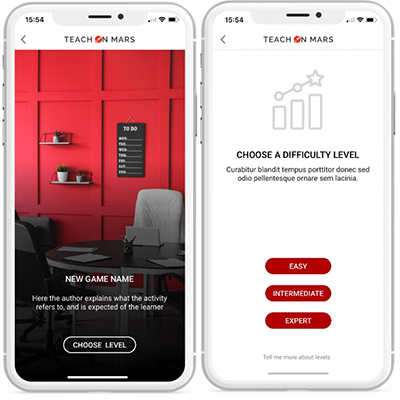 The “Easy” level gives learners the number of letters in the answer, as well as the first letter of each word. Keep in mind that the number of points learners can earn is limited.
The “Easy” level gives learners the number of letters in the answer, as well as the first letter of each word. Keep in mind that the number of points learners can earn is limited.- The “Intermediate” level also reveals the number of letters in the answer. The intermediate level doesn’t place any limitation on the number of points earned.
- The “Expert” level goes further: learners have no clues to guess the answer and have to try their luck by typing their answer using their keyboard. In exchange, the number of points earned is higher than for other levels.
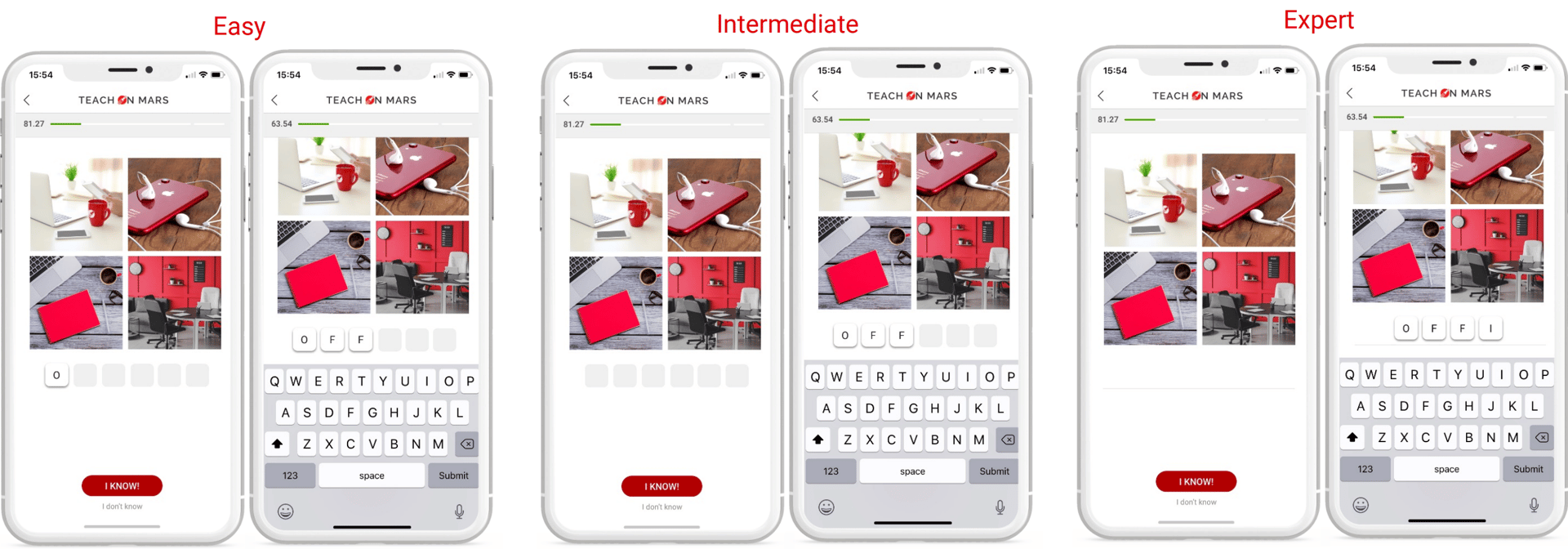
Once again, you can choose whether to provide several levels in your Guess What activity or not, and this is not directly linked to your content. Individual questions are not associated with a single game level, the level is activated for all of the questions in your activity. You can decide only to choose one of the three levels and turn the game into a simple and effective pedagogical activity. Or you can up the stakes for “Achiever” profiles, by allowing them to try out different difficulty levels or by challenging them to earn more points if they pass the “Expert” level.
Game modes to match your pedagogical objective
One of the first questions people ask us when designing a new game is, “do you receive the correct answers?” With Guess What, we wanted to investigate this need and enable our authors to feel more guided when configuring their game. That’s why Guess What provides two different game modes: “Against-the-clock” for competitive and gamified play and “Retention” mode, for more leisurely experiences, focused on learning and memorising concepts.
What does the choice of game mode imply?
- “Against-the-clock” mode provides a time trial game (like a Quiz game or Scramble game). The correct answers are accessible at the end of the activity to revise and learn from any mistakes.
- “Retention” mode provides a non-timed game (like for the Multiquiz or Training Game), with the correct answers accessible after each question. Learners can see their correct and incorrect answers as they go and receive an explanation at each stage to facilitate learning and recall.
Exploring Guess What…
As you have seen, Guess What is a metamorphic, multi-potential activity which (we hope) is sure to satisfy your appetite for edutainment. We can’t wait for you to give it a go, and for it to enhance the content of your courses and pathways thanks to the many possibilities it offers:
- Choice of number of images per question
- Choice of one or several difficulty levels
- Choice of game mode: against-the-clock or retention.
Guest What will be available in early 2023.
For activation details, please contact your Customer Success Manager or Key Account Manager.
The Product team would like to convey its warm thanks to our Explorer Clients, to whom we showed the first designs of Guess What a few months ago, and thanks to whom we were able to enhance certain aspects of the game.
See you soon for a Guess What challenge!
Marielle has been travelling in the Teach on Mars rocket ship for 6 years. After having contributed her skills in pedagogical engineering and training facilitation to guide clients towards success, she is now Product Owner, in charge of designing the new features of the solution.


